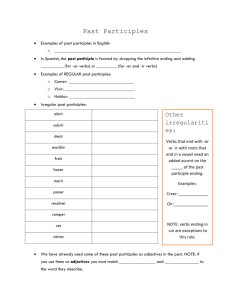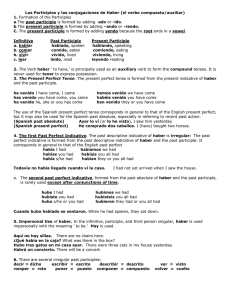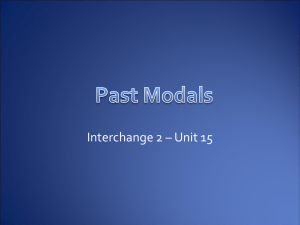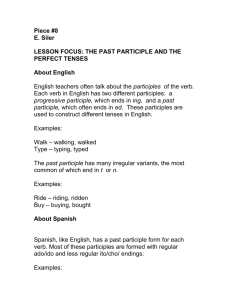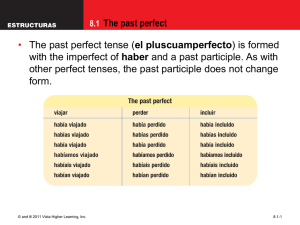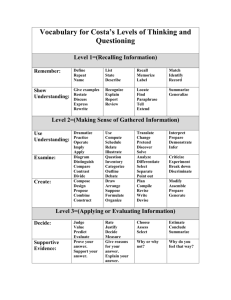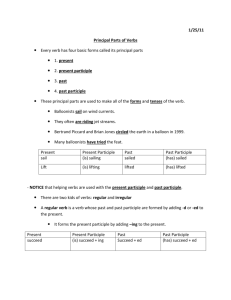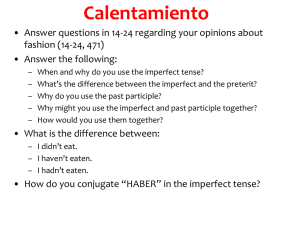Spanish: The Perfect Tenses
advertisement
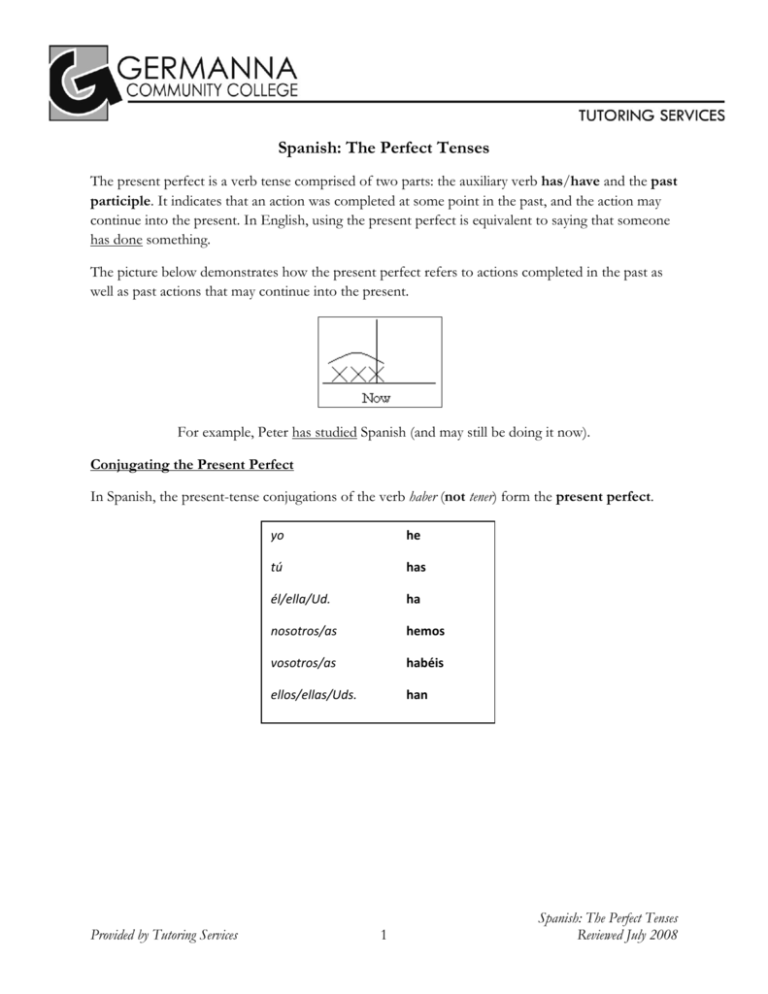
Spanish: The Perfect Tenses The present perfect is a verb tense comprised of two parts: the auxiliary verb has/have and the past participle. It indicates that an action was completed at some point in the past, and the action may continue into the present. In English, using the present perfect is equivalent to saying that someone has done something. The picture below demonstrates how the present perfect refers to actions completed in the past as well as past actions that may continue into the present. For example, Peter has studied Spanish (and may still be doing it now). Conjugating the Present Perfect In Spanish, the present-tense conjugations of the verb haber (not tener) form the present perfect. Provided by Tutoring Services yo he tú has él/ella/Ud. ha nosotros/as hemos vosotros/as habéis ellos/ellas/Uds. han 1 Spanish: The Perfect Tenses Reviewed July 2008 The past participle is used immediately following the verb haber. Note that verbs ending in -ar change to -ado, while -er and -ir verbs both change to –ido. Infinitive Stem Ending Past Participle Hablar Habl ado Hablado Comer Com ido Comido Vivir Viv ido Vivido Lazaro ha cenado con su madre. Lazaro has eaten dinner with his mother. He salido de mi casa. I have left my house. No hemos podido encontrar nuestro gato. We haven’t been able to find our cat. However, as with all conjugations, there are exceptions to the rules. Here are some of the most common irregular past participles: hacer hecho abrir abierto poner puesto escribir escrito romper roto cubrir cubierto ver visto decir dicho volver vuelto morir muerto Note: The present perfect of hay is ha habido. Pablo ha escrito muchos poemas. Pablo has written many poems. Los hermanos han hecho su tarea. The brothers have done their homework. Provided by Tutoring Services 2 Spanish: The Perfect Tenses The Past Perfect Pairing haber with a past participle may also be used to express things that occurred and concluded in the past, before something else happened. This is equivalent to saying in English that someone had done something. This conjugation is called the past perfect. The picture below shows how the action of the past perfect was completed before another past event: For example, Jessica had taken a shower before she left on her trip. To form the past perfect, put the imperfect tense conjugation of haber next to a past participle. Haber is conjugated in the imperfect as shown below: yo había tú habías él/ella/Ud. había nosotros/as habíamos vosotros/as habíais ellos/ellas/Uds. habían ¿Ya había terminado el semestre? The semester had ended already? Yo había comido el pollo. I had eaten the chicken. Habíamos vuelto al restaurante. We had returned to the restaurant. Note: The imperfect conjugation of hay is also había. Había un hombre en el grupo. Provided by Tutoring Services There was a man in the group. 3 Spanish: The Perfect Tenses The Past Participle as an Adjective In addition to being paired with haber, the past participle may also be used as an adjective. As an adjective, the past participle must agree with the number and gender of the noun it is describing. la puerta cerrada the closed door los teléfonos rotos the broken telephones When used as an adjective, the past participle comes after the verb estar. ¿Están terminados tus ensayos? Are your essays finished? La ventana está abierta. The window is open. Provided by Tutoring Services 4 Spanish: The Perfect Tenses
